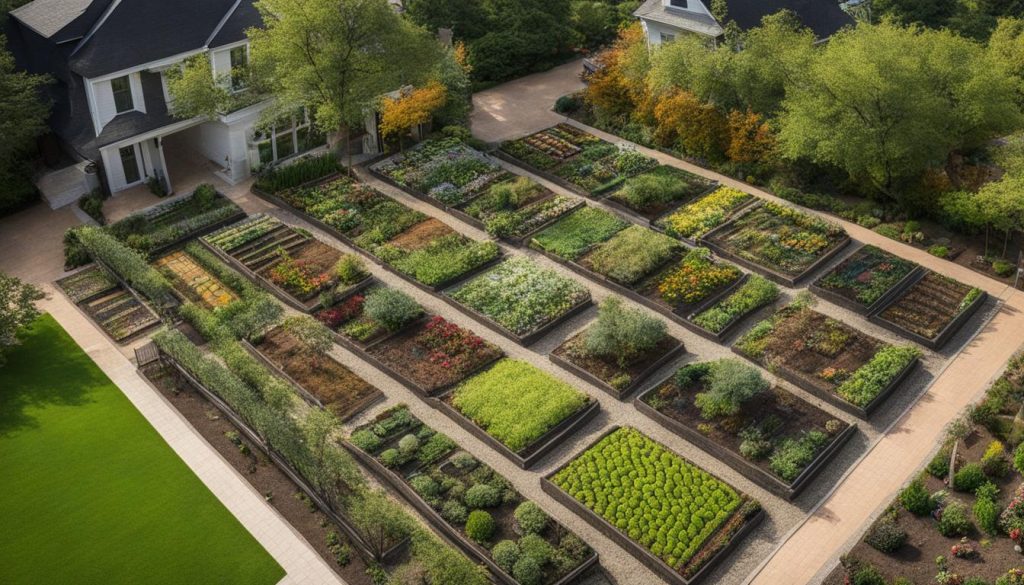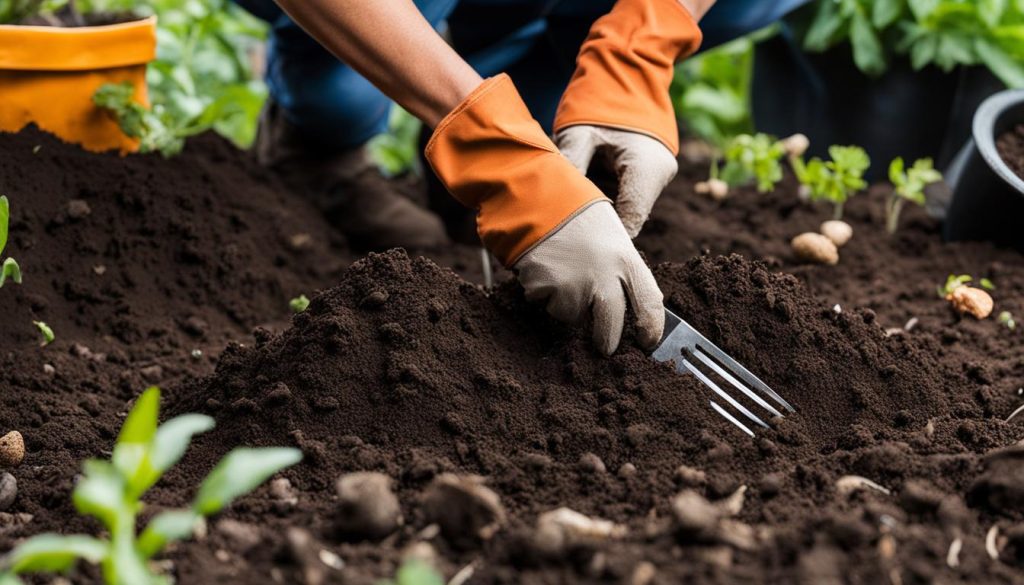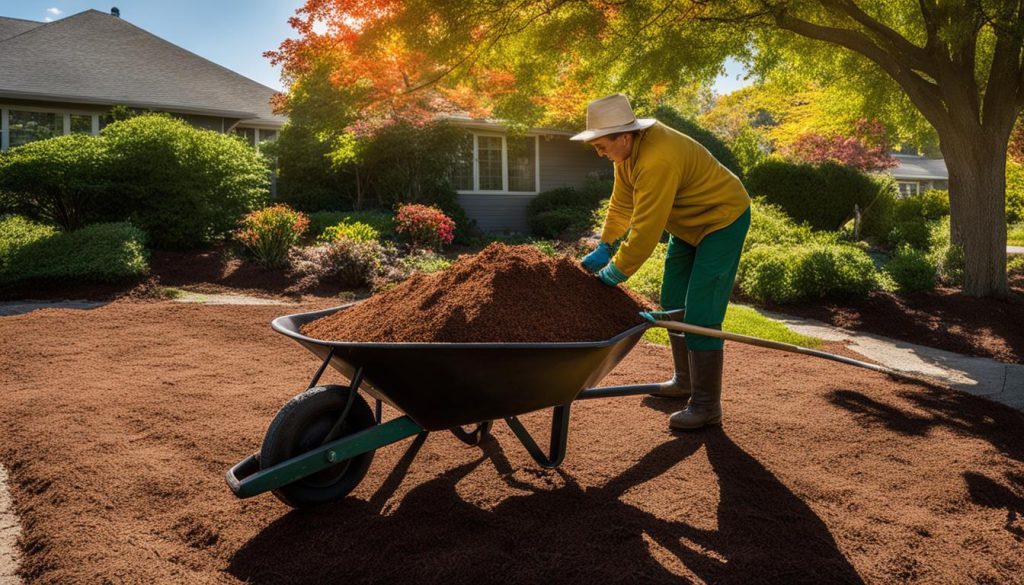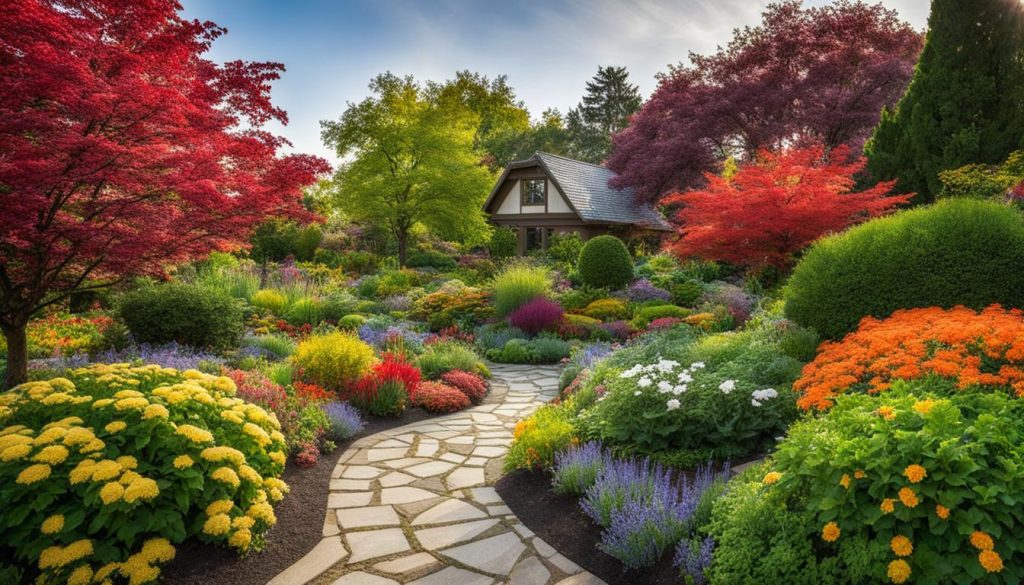Gardening is a rewarding and therapeutic hobby, and with the right techniques, it can yield year-round rewards. A year-round garden creates a beautiful and vibrant outdoor space that you can enjoy in any season. With proper landscaping and planning, you can create a garden for all seasons that thrives throughout the year.
At Landscaping Vaughan, we understand the importance of a lush and sustainable garden. Whether you’re a seasoned gardener or just starting, we have expert tips and guidance to create a garden that remains vibrant and beautiful throughout the year, regardless of the changing seasons.
With a year-round garden, you can enjoy blooms and greenery in the spring and summer and stunning foliage colors in the fall and winter. The key is to plan and plant strategically, sourcing resilient plants that can withstand the changing weather patterns.
Whether you’re a resident of Canada’s mild coastal regions or the more frigid interior areas, we have landscaping solutions that cater to your specific climatic needs. So, let’s get started on creating a garden for all seasons!
Planning for Year-Round Success
When it comes to creating a year-round garden, careful planning is essential. We need to understand the different seasonal varieties and select the right plants to ensure our garden remains beautiful throughout the year.
Understanding Seasonal Variety
The first step in planning a year-round garden is to understand the different seasonal varieties. By carefully selecting plants that thrive in each season, we can ensure that our garden remains vibrant and colorful throughout the year. For example, in the spring, we might choose bulbs and early blooming perennials, while in the fall, we might opt for shrubs and trees that produce colorful foliage.
Choosing the Right Plants
Once we’ve identified the seasonal varieties, the next step is to select the right plants for our garden. We want to choose plants that are hardy, low-maintenance, and suited to our climate conditions. Consider factors such as soil type, sunlight exposure, and water requirements when selecting plants for your year-round garden.
Pro Tip: Be sure to choose plants that have a long blooming period. This will ensure that your garden remains colorful and vibrant throughout the year.
Creating a Planting Schedule
Once we’ve selected our plants, the next step is to create a planting schedule. We want to stagger the planting of different varieties to ensure that our garden has continuous color and interest. Consider creating a table to keep track of your planting schedule, including the variety of plant, the date planted, and the expected bloom time.
| Plant Variety | Date Planted | Expected Bloom Time |
|---|---|---|
| Tulips | October 1st | April |
| Lilacs | April 15th | May-June |
| Hydrangeas | June 1st | July-August |
Pro Tip: When selecting plants, consider choosing a variety with different bloom times within each season. This will ensure that your garden has interest and color throughout the entire season, rather than all at once.
By following these tips for garden planning, we can ensure that our year-round garden is a success. In the next section, we’ll explore how to create a strong foundation for our garden to maintain its health and beauty throughout the year.

Creating a Strong Foundation
Creating a strong foundation is essential to ensure a flourishing garden all year round. Start with soil preparation. Good soil is the foundation of a healthy garden. It’s essential to check the soil quality, pH level, and nutrient level before planting.
You can improve soil quality by adding compost, manure, or other organic matter. These materials will enrich the soil, improve drainage, and provide nutrients for your plants. You can find organic matter at a local garden store, or you can create your own compost.
After soil preparation, it’s crucial to maintain your garden beds. Regular garden bed maintenance, such as weeding and aerating, is necessary to keep your plants healthy. Deadheading plants is also an important task as it stimulates new growth and blooming.
Another critical aspect of creating a strong foundation for your year-round garden is having an efficient irrigation system in place. An irrigation system ensures that your plants receive the right amount of water they need, especially during hot summer days, without wasting water. You can choose from several types of irrigation systems, depending on garden size, soil type, and plant types.

Table: Garden Irrigation Systems
| Irrigation System | Pros | Cons |
|---|---|---|
| Drip irrigation | Water-efficient, ideal for areas with water restrictions | Requires frequent maintenance to prevent clogging |
| Sprinkler irrigation | Covers a large area, easy to install | Can waste water due to runoff or wind |
| Soaker hoses | Water-efficient, inexpensive | Difficult to adjust water pressure, may require frequent replacement |
By implementing these practices, you can create a strong foundation for your year-round garden. This foundation will ensure that your plants stay healthy, regardless of the changing seasons.
Seasonal Planting Strategies
Choosing the right plants for your year-round garden is crucial to maintaining a healthy and vibrant outdoor space. Here are some seasonal planting strategies to ensure your garden thrives throughout the year:
- Spring: Spring is the perfect time to plant bulbs and other perennials that will bloom throughout the season. Some popular choices include tulips, daffodils, and hyacinths.
- Summer: Summer is the season for bright and bold annuals such as petunias, marigolds, and zinnias. These plants add a pop of color to your garden and thrive in the warm weather.
- Fall: Fall is an excellent time to plant trees and shrubs, as well as perennials such as asters and mums. These plants are hardy and can survive the cooler temperatures of the season.
- Winter: While many plants may not survive the harsh winter months, there are still options for a winter garden. Consider cold-weather plants such as winter pansies, holly, and evergreen shrubs.
Proper plant care is also essential to maintaining a healthy garden year-round. Regular watering and fertilizing can help keep your plants healthy and strong, while pruning can prevent overgrowth and ensure optimal growth.
Benefits of Mulching
Mulching is an excellent way to promote healthy plant growth and protect your garden from the elements. Here are some benefits of mulching:
| Benefit | Description |
|---|---|
| Retains Moisture | Mulch helps retain moisture in the soil, reducing the need for frequent watering. |
| Suppresses Weeds | Mulch helps prevent weeds from sprouting and taking nutrients away from your plants. |
| Regulates Temperature | Mulch helps regulate soil temperature, keeping your plants cool in the summer and warm in the winter. |
| Protects Roots | Mulch provides a protective layer around the roots of your plants, shielding them from extreme temperature changes and preventing erosion. |
Overall, a combination of strategic planting and proper plant care techniques, such as mulching, can help you create a thriving year-round garden. With the right planning and maintenance, your outdoor space can be a beautiful and vibrant oasis no matter the season.

Year-Round Garden Maintenance
Maintaining a year-round garden requires ongoing care and attention to ensure that it stays healthy and vibrant throughout the changing seasons. Here are some tips to help you keep your garden looking its best all year long.
Seasonal Pruning
Pruning is an essential part of maintaining a healthy garden. It helps to promote new growth, remove dead or damaged branches, and shape the plants. How often you prune depends on the type of plant and the season. For example, spring-blooming plants like lilacs should be pruned after they flower, while summer-blooming plants like hydrangeas should be pruned in early spring before they start to grow.
Winter Protection
The winter months can be tough on your garden. To protect your plants from the harsh winter weather, consider applying a layer of mulch around the base of the plants. This will help to insulate the soil and retain moisture, which is essential for the health of your plants. You can also wrap delicate plants in burlap or other insulating materials to help them survive the winter.
Regular Maintenance
Regular maintenance tasks like weeding, watering, and fertilizing are essential for keeping your garden healthy year-round. We recommend checking your garden regularly to ensure that it’s getting enough water and nutrients, and to remove any weeds or pests that may be damaging your plants. By taking a proactive approach to garden maintenance, you can help to prevent problems before they occur and ensure that your garden remains healthy and beautiful throughout the year.
By following these tips, you can keep your year-round garden looking its best no matter what the season. With regular maintenance and a little bit of TLC, your garden can be a source of joy and beauty all year long.
FAQ
What are the benefits of creating a year-round garden?
Creating a year-round garden allows you to enjoy a vibrant and beautiful outdoor space regardless of the changing seasons. It provides a sense of tranquility and connection with nature throughout the year.
How do I plan a garden for all seasons?
Planning a year-round garden involves understanding the different seasonal varieties and selecting the right plants. Consider factors such as bloom times, foliage colors, and plant hardiness to ensure a diverse and visually appealing garden throughout the year.
What should I do to create a strong foundation for my year-round garden?
To create a strong foundation, focus on soil preparation by improving its quality and fertility. Regular garden bed maintenance, such as weeding and adding organic matter, is also essential. Additionally, installing an efficient irrigation system ensures your plants receive adequate water.
How can I choose the right plants for each season?
When selecting plants for each season, consider their blooming periods, foliage colors, and cold hardiness. Choose a mix of evergreen and deciduous plants to provide year-round interest. It’s also important to consider your specific climate and growing conditions.
What maintenance tasks should I undertake for my year-round garden?
Regular maintenance is essential for a thriving year-round garden. This includes seasonal pruning to promote healthy growth, mulching to conserve moisture and suppress weeds, and winter protection measures, such as covering fragile plants or providing insulation.

